According to a European Union study, the global construction industry contributes 23% of the world’s CO2 emissions across its supply chain. Some 5.5% of these emissions are pollutants and particulate matter via combustion of fossil fuels to power machinery and equipment. Factor in the resulting air and noise pollution and it is no wonder individuals and governments worldwide want a better way to build.
Increasingly, municipalities and countries are mandating lower or net-zero emissions on construction sites. New York City recently signed an executive order requiring future capital projects (a $16 billion annual proposition) to lower the greenhouse gas emissions arising from the manufacturing, transportation, installation, maintenance, and disposal of building materials.
New York’s executive order has a stated secondary purpose: driving the market towards cleaner construction machinery. In the mandate, specifications for capital construction contracts will include low/no-emission vehicles and equipment, with a preference for all-electric equipment to reduce air and noise pollution. Oslo, Norway was the first city to demonstrate successful construction sites using 100% electric machinery, showing that the goal is possible.
All of these factors pushed Ligchine to develop the new MAX PLUS ELECTRIC screed, which after debuting the concept in January 2022, will have the screed commercially available at the January 2023 World of Concrete exposition. “We asked ourselves, how can we come up with a machine that meets the goal of zero emissions and continues to provide the same or better-quality product that our customers expect,” says Kyle Hohmann, Vice President of Sales and Marketing.
The new MAX PLUS ELECTRIC laser screed addresses all these requirements: meeting Ligchine’s demanding specifications, allowing contractors to be productive, and solving labor challenges by reducing labor needs on the jobsite.
“When customers buy a piece of Ligchine equipment, there is an expectation it will be up and running without any degradation of performance. That’s definitely the case here,” says Joshua Rocholl, Director of Engineering.
Real-world, job-site testing in a variety of site conditions on customer pours has confirmed that not only is there no reduction in performance using the new MAX PLUS ELECTRIC screed, but there are also many positives, including:
- Reduced or zero carbon emissions with its long-lasting lithium-ion battery
- Immediate fuel savings vs. diesel or gasoline
- Reduction in noise on the job site from the quiet electric motor
- No recovery time for functions, or loss of power when using functions
- Automatic optimization of power based on operator demand
- No additional learning curve or labor required to operate
“We overcame significant challenges in embracing the transition to low/zero-emissions machinery,” continues Rocholl. “But it is important for us to lead the industry and take the risk.”
Among those challenges?
- Developing a battery to meet power demands without significantly impacting the size or weight of the machine
- Lack of charging infrastructure and/or electricity on project sites
- Cost differential between battery/electric engines vs. combustion engines – as much as 40%
- Ever-changing local, state and federal energy and tax policies that complicate investment decisions for construction industry contractors
Maximizing battery life without increasing the size of the batteries or the machine was the key challenge, while still providing boom reach of 17 feet and head width of 10 feet. “We had to think about the way weight is distributed on the machine – the battery pack concentrates a large weight in an small area. We got the battery life dialed in, and still have a compact footprint,” continues Rocholl, whose prior experience includes electrification of waste management vehicles,
The new MAX PLUS ELECTRIC screed can complete up to a 12,000 sq. ft. concrete placement on one full battery charge. More importantly, the MAX PLUS ELECTRIC screed can charge using a standard 120V power source, with no need for a special charger. That means the machine can charge overnight and be ready the next morning. In the future, there will be an option to swap out battery so the screed can be left on site in situations where there is no electricity available.
Rocholl also points to incentives, grants and subsidies for contractors to transition their equipment toward net zero-emissions.
Tuning the screed’s hydraulic functions to work with electrically generated power vs. gas/diesel was an additional hurdle, but one that actually solves a problem inherent with combustion engines. “With gas and diesel, you have certain RPMs. When you use functions which demand power, this causes a draw down in the RPMs, which requires recovery time when you stop using them. With electricity, the power is constantly there – there is no need no ramp up or recover. That actually saves time on the site,” Rocholl says.
Controls are optimized, as well, putting the machine into rest mode when not called on for functionality. And the different modes are automatically optimized based on what to power – driving, screed mode, cooling mode, heat mode.
An essential benefit when using the MAX PLUS ELECTRIC screed vs. combustible fuel is noise reduction. “Ultimately, we made the MAX PLUS ELECTRIC as simple as possible to run. There is no learning curve if you’re familiar with combustion engine screeds. The only difference operators will experience is how quiet it is. And that’s a big positive,” says Hohmann.
Sources
https://bigbuyers.eu/working-groups/past/zero-emission-construction-sites




